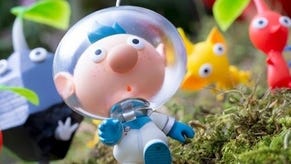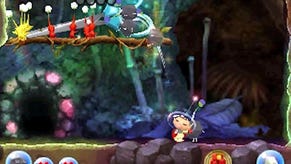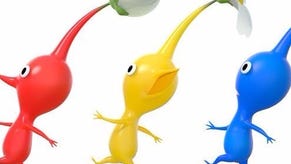Don't get too excited about Hey! Pikmin
Lacking in Sparklium.
When it was revealed that Hey! Pikman isn't, in fact, the result of one of Nintendo's internal development teams but instead the work of Yoshi's New Island developer Arzest I was relieved, rather than disappointed.
Relieved, in the first instance, because it means that this likely isn't the Pikmin project Shigeru Miyamoto was referring to when he said that Pikmin 4 was in the works and so that title is probably - hopefully - still underway, safely ensconced behind the walls of Nintendo HQ. Relieved, also, because if Hey! Pikmin should turn out to be less than stellar, as Yoshi's New Island did, then perhaps it doesn't really matter so long as we still have Pikmin 4 on Switch to look forward to.
After spending an hour with a just three of the game's levels, that relief feels palpable. I very much hope that Pikmin 4 is indeed still coming because what I've seen of Hey! Pikmin doesn't offer a great deal to be excited about.
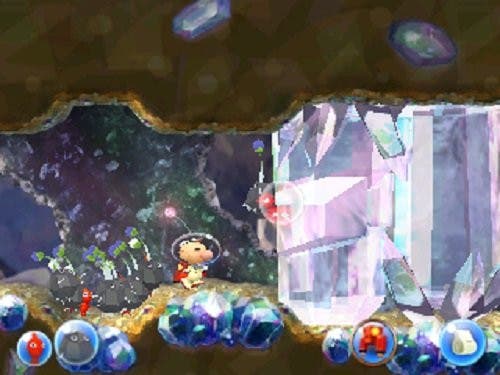
Those three levels I sampled were taken from the opening two sectors of the game and were primarily concerned with teaching the fundamental controls and introducing game concepts. As such, they were purposefully linear and deliberately basic. Finding Pikmin, learning how to throw Pikmin and losing Pikmin to fussy, fiddly control issues was the order of the day, all whilst making in-roads into gathering the 30,000 Sparklium required to fix clumsy Captain Olimar's crashed spaceship.
The controls are simple enough: control pad or Y and A buttons move Captain Olimar left and right (facilitating left or right-handed play), while prods of the stylus are used to blow the whistle to get Pikmins' attention and to activate a jet pack. Sadly, this latter option does not allow for the free-wheeling movement that you might imagine and instead hovers Olimar a fixed, short distance above the ground where you can move him left or right for a short while. In this limited test-run it was primarily used in lieu of a jump button in order to climb ledges. Pikmin are thrown with jabs, rather than swipes, with distance determined by how far away from Olimar you tap the screen or what you're aiming at. It's a set of gestures that feels unnecessarily limiting, rather than deliberately streamlined.
The self-contained levels see you locating Pikmin in order to navigate a play area that consists of moving left to right and finding the occasional hidden cave entrance that houses additional Sparklium. Our flora/fauna friends are available to recruit from vegetative clumps by way of a whistle-blow, and it's this same whistle-blow that you'll need to employ multiple times per level in order to keep your Pikmin together and in check. Not because they are inquisitive free spirits that wander off to explore their surroundings, but because they often refuse point-blank to follow Olimar any distance at all without being prompted to do so, coming across as obstinate, rather than playful.
Flinging a handful of them to move a block, pull a lever or squash an obstacle was as complex as their deployment got in these early levels. It's likely that when you're managing multiple different colours (only red, yellow and blue were on offer, in limited combination) Arzest will come up with something more engaging than what was on offer here. However, even allowing for the eventual expansion of the ideas contained within, there seems little hope that this 2D-side scrolling platformer will be able to emulate the joy of exploration and satisfying puzzle-solving that encapsulates Pikmin's broader appeal.
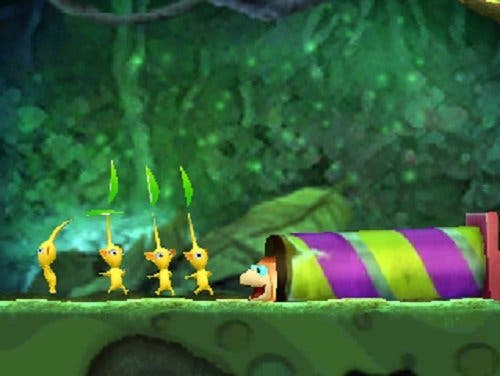
Potential for betterment aside, there is greater cause for concern in some of the controls and collision detection. Enemies must be specifically targeted, which works fine for small beasties that are one-shot kills by way of a flung Pikmin. However, when facing one of the garden's larger minions, attempting to aim above it to rain Pikmin down upon it like cutesy SAS forces led to them falling straight through its body and on to the ground where they were at its mercy to be gobbled up like tic-tacs. Couple this flaw with zero mid-level check-pointing and the chance of achieving a 100 per cent Pikmin retention rate seems more tiresome chore than worthwhile challenge.
Having played such a small part of the game there's always a chance - a hope - that things might be vastly improved upon tackling it as a whole. For now, though, my concern that this is a genuinely representative sample of what's to come is as great as my relief that Pikmin 4 might be just around the corner.



